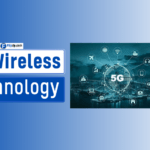Introduction
As we stand on the brink of a new technological era, 6G Wireless Technology promises to revolutionize the way we connect, communicate, and interact with the world around us. With the rapid advancements in telecommunications, we have already witnessed the transformative impacts of 4G and 5G technologies.
However, the anticipated rollout of 6G technology is set to take connectivity to an unprecedented level, providing faster speeds, lower latency, and enhanced connectivity. This article explores the various dimensions of 6G, including its definition, potential applications, and implications for our daily lives, while addressing common questions and misconceptions.
Understanding 6G Wireless Technology

What is 6G Wireless Technology?
6G Wireless Technology refers to the sixth generation of mobile telecommunications technology, expected to emerge around 2030. It aims to build upon the capabilities of 5G Wireless Technology, offering even faster data rates, increased capacity, and improved reliability. While 5G technology is currently designed to achieve data rates of up to 10 gigabits per second (Gbps), 6G is projected to achieve speeds of 100 Gbps or even higher.
Key Features of 6G Technology
- Ultra-High Speeds: 6G aims to provide data transfer rates exceeding 100 Gbps, enabling seamless streaming of high-definition content and supporting applications requiring massive bandwidth.
- Ultra-Low Latency: One of the standout features of 6G will be its extremely low latency, potentially reducing delays to as little as 1 millisecond, which is critical for applications like remote surgeries, autonomous vehicles, and real-time gaming.
- Enhanced Connectivity: 6G will support a higher number of devices per square kilometer, facilitating the continued growth of the Internet of Things (IoT) and smart cities.
- Advanced AI Integration: Artificial Intelligence (AI) will be deeply integrated into 6G networks, optimizing resource allocation and improving user experiences.
- Flexible Network Architecture: 6G will utilize a flexible architecture that can adapt to different environments, enhancing user experience across urban and rural settings.
The Evolution from 5G to 6G

To fully appreciate the potential of 6G Wireless Technology, it is essential to understand the evolution from 5G. While 5G has significantly improved speed and capacity, it still faces limitations regarding latency, energy efficiency, and network management. Here’s a comparative overview:
| Feature | 5G | 6G |
|---|---|---|
| Speed | Up to 10 Gbps | Exceeds 100 Gbps |
| Latency | 1-10 milliseconds | 1 millisecond or less |
| Device Density | 1 million devices/km² | 10 million devices/km² |
| Energy Efficiency | Moderate | Highly efficient |
| AI Integration | Limited | Deep integration |
Potential Applications of 6G Wireless Technology
The potential applications of 6G Wireless Technology span various sectors, including healthcare, education, transportation, and entertainment. Here are some noteworthy applications:
1. Healthcare Revolution
6G is expected to transform healthcare delivery through telemedicine, remote surgeries, and real-time health monitoring. With ultra-low latency and high data rates, doctors can perform surgeries remotely with robotic precision, while patients can receive real-time health updates through connected devices.
2. Smart Cities
The development of smart cities will heavily rely on 6G technology, enabling interconnected systems for traffic management, energy distribution, and public safety. For example, traffic signals can adapt in real-time based on traffic conditions, reducing congestion and improving safety.
3. Augmented and Virtual Reality (AR/VR)
6G will enhance the AR and VR experience by providing the necessary bandwidth and low latency required for immersive experiences. This technology can revolutionize gaming, education, and training, allowing for realistic simulations that can be experienced remotely.
4. Autonomous Vehicles
The safety and efficiency of autonomous vehicles depend on real-time data exchange. With the high speeds and low latency of 6G, vehicles can communicate with each other and their surroundings, leading to safer and more efficient transportation systems.
5. Industry 4.0
In manufacturing, 6G technology will support smart factories through seamless connectivity between machines, AI, and data analytics. This will enable real-time monitoring and optimization of production processes, leading to increased efficiency and reduced downtime.
Key Challenges and Considerations
1. Infrastructure Development
Developing the infrastructure for 6G will require significant investment and planning. This includes upgrading existing cellular towers, creating new satellite networks, and ensuring compatibility with various devices.
2. Spectrum Allocation
The availability of suitable spectrum bands is crucial for the successful deployment of 6G. Regulatory bodies will need to establish guidelines for the efficient use of the spectrum, balancing the needs of various stakeholders.
3. Cybersecurity Concerns
As connectivity increases, so do the risks associated with cyberattacks. Ensuring robust security measures in 6G networks will be critical to protect sensitive data and maintain user trust.
4. Environmental Impact
The energy consumption of 6G technology and its infrastructure must be carefully managed to minimize its environmental footprint. Strategies for energy efficiency and sustainable practices will be essential.
Common Misconceptions about 6G Wireless Technology

1. 6G is Just a Faster Version of 5G
While speed is a significant factor, 6G is not merely an extension of 5G. It represents a paradigm shift in connectivity, with new technologies, architectures, and applications that go beyond what 5G offers.
2. 6G is Still Far Away
Although 6G is expected to be commercially available around 2030, research and development are already underway. Companies and research institutions are actively exploring 6G technologies, paving the way for future innovations.
3. 6G Will Replace 5G Completely
Rather than completely replacing 5G, 6G is expected to coexist with it, providing additional capabilities and enhancements. This transition will allow for a gradual evolution of technology and user experience.
The Role of Artificial Intelligence in 6G
AI will play a pivotal role in optimizing 6G networks. By analyzing vast amounts of data, AI can improve network efficiency, manage resources, and enhance user experiences. Key applications of AI in 6G include:
- Predictive Maintenance: AI can anticipate network failures before they occur, allowing for proactive maintenance and minimizing downtime.
- Dynamic Resource Allocation: AI algorithms can allocate resources based on real-time demand, ensuring optimal performance and efficiency.
- User Behavior Analysis: Understanding user preferences and behaviors can lead to personalized services and improved user engagement.
Conclusion
6G Wireless Technology is poised to redefine the landscape of connectivity, promising enhanced speed, capacity, and low latency. Its potential applications across various sectors, from healthcare to smart cities, highlight the transformative impact it will have on our daily lives. While there are challenges to overcome, including infrastructure development and cybersecurity, the future of 6G holds immense promise.
As we continue to explore the possibilities of this next-generation technology, it’s essential to remain informed about its implications and benefits. By understanding 6G Wireless Technology, we can better prepare for a future where connectivity becomes more seamless, efficient, and integral to our lives.
FAQs, 6G Wireless Technology
1. What is 6G wireless technology?
6G wireless technology is the sixth generation of mobile telecommunications technology, expected to succeed 5G. It aims to provide significantly faster data speeds, lower latency, and enhanced connectivity capabilities. While still in the research phase, 6G is anticipated to revolutionize communication by enabling advanced applications such as holographic communication, augmented reality (AR), and smart cities.
2. When is 6G expected to be commercially available?
While 5G is still being rolled out globally, 6G is projected to become commercially available around 2030. Research and development are ongoing, with various countries and organizations working on the standards and technologies needed to bring 6G to market.
3. How fast will 6G be compared to 5G?
6G is expected to offer data rates of up to 100 Gbps or even higher, significantly faster than the maximum speeds of 5G, which can reach up to 10 Gbps under optimal conditions. This increase in speed will facilitate real-time data transfer for various applications.
4. What are the key features of 6G technology?
Key features of 6G technology may include:
Ultra-high data rates (up to 100 Gbps)
Extremely low latency (around 1 millisecond)
Enhanced network reliability and coverage
Support for a massive number of connected devices (IoT)
Integration of AI and machine learning for optimized network management
Advanced applications like holographic communication and immersive experiences
5. How will 6G impact everyday life?
6G is expected to transform everyday life by enabling advanced technologies such as:
Smart homes and cities with interconnected devices
Enhanced telemedicine and remote healthcare services
Immersive augmented and virtual reality experiences
Autonomous vehicles with real-time data sharing
Improved educational tools and experiences through interactive technologies











